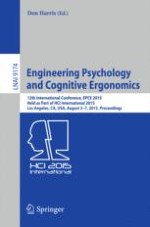
2015 | OriginalPaper | Chapter
The Development of a Method to Assess the Effects of Traffic Situation and Time Pressure on Driver Information Preferences
Authors : Alexander Eriksson, Ignacio Solis Marcos, Katja Kircher, Daniel Västfjäll, Neville A Stanton
Published in: Engineering Psychology and Cognitive Ergonomics
Publisher: Springer International Publishing
Activate our intelligent search to find suitable subject content or patents.
Select sections of text to find matching patents with Artificial Intelligence. powered by
Select sections of text to find additional relevant content using AI-assisted search. powered by